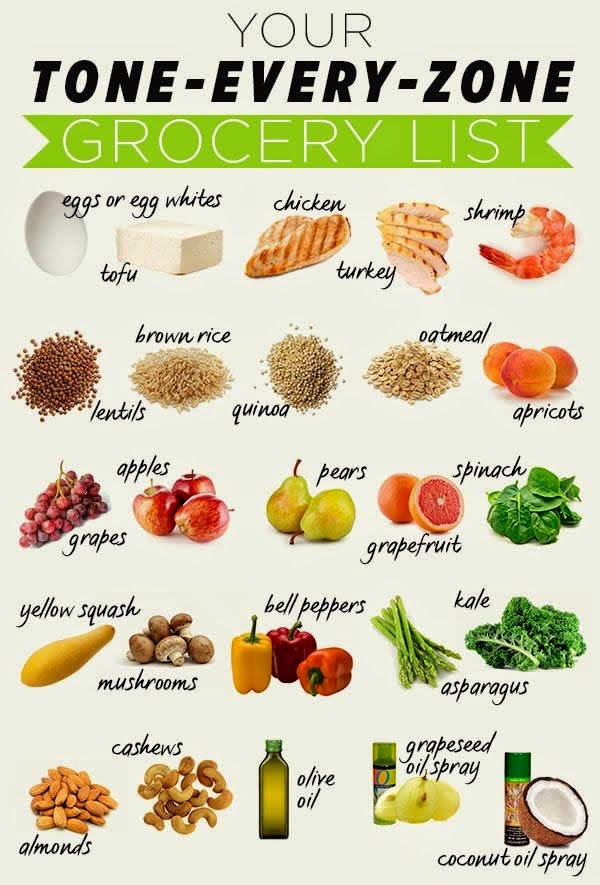 |
| Vegetarianism |
Vegetarianism refers to voluntary abstinence from eating meat. Vegetarians refrain from eating meat for various reasons, including religious, health, and ethical ones. Lacto-ovo vegetarians supplement their diet with dairy (lactose) products and eggs (ovo). Vegans (pronounced vee-guns) do not eat any animal-derived products at all.
Origins The term vegetarian was coined in 1847 by the founders of the Vegetarian Society of Great Britain, but vegetarianism has been around as long as people have created diets. Some of the world’s oldest cultures advocate a vegetarian diet for health and religious purposes. In India, millions of Hindus are vegetarians because of their religious beliefs.
One of the ancient mythological works of Hinduism, the Mahabharata, states that, “Those who desire to possess good memory, beauty, long
life with perfect health, and physical, budbahasa and spiritual strength, should abstain from animal foods.” The
yoga system of living and health is vegetarian, because its dietary practices are based on the belief that healthy food contains prana.
Prana is the universal life
energy, which yoga experts believe is abundant in fresh fruits, grains, nuts and vegetables, but absent in meat because meat has been killed. Yogis also believe that spiritual health in influenced by the practice of ahimsa, or not harming living beings.
The principle of ahimsa (non-violence) appears in the Upanishads (Vedic literature) from c. 600–300 B.C. Taking of animal life or human life under any circumstances is sinful and results in rebirth as a lower organism. It became a fundamental element of Jainism, another religion of India.
Some Buddhists in Japan and China are also vegetarian because of spiritual beliefs. In the Christian tradition, the Trappist Monks of the Catholic Church are vegetarian, and some vegetarians argue that there is evidence that Jesus and his early followers were vegetarian.
Other traditional cultures, such as those in the Middle East and the Mediterranean regions, have evolved diets that frequently consist of vegetarian foods. The Mediterranean diet, which a Harvard study declared to be one of the world’s healthiest, is primarily, although not strictly, vegetarian.
The list of famous vegetarians forms an illustrious group. The ancient Greek philosophers, including Socrates, Plato, and Pythagoras, advocated vegetarianism.
In modern times, the word to describe someone who likes to feast on food and wine is “epicure,” but it is little known that Epicurus, the ancient philosopher, was himself a diligent vegetarian. Other famous vegetarians include Leonardo da Vinci, Sir Isaac Newton, Leo Tolstoy, Ralph Waldo Emerson, and Henry Thoreau.
 |
| Vegetarianism and your health |
This century’s celebrated vegetarians include Gandhi, the physician Albert Schweitzer, writer George Bernard Shaw, musician Paul McCartney, and champion triathlete Dave Scott. Albert Einstein, although not a strict vegetarian himself, stated that a vegetarian diet would be an evolutionary step for the human race.
Vegetarianism in America received a lot of interest during the last half of the nineteenth century and the beginning of the twentieth century, during periods of experimentation with diets and health practices. Vegetarianism has also been a religious practice for some Americans, including the Seventh-day Adventists, whose lactoovo vegetarian diets have been studied for their health benefits.
Vegetarianism has been steadily gaining acceptance as an alternative to the meat-and-potatoes bias of the traditional American diet. In 1992, Vegetarian Times magazine performed a poll that showed that 13 million Americans, or 5% of the
population, identified them-selves as vegetarians.
Several factors contribute to the interest in vegetarianism in America. Outbreaks of food poisoning from meat products, as well as increased concern over the additives in meat such as hormones and antibiotics, have led some people and professionals to question meat’s safety. There is also an increased awareness of the questionable treatment of farm animals in factory farming.
But the growing health consciousness of Americans is probably the major reason for the surge in interest in vegetarianism. Nutrition experts have built up convincing evidence that there are major problems with the conventional American diet, which is centered around meat products that are high in cholesterol and saturated fat and low in fiber.
Heart disease, cancer, and diabetes, which cause 68% of all deaths in America, are all believed to be influenced by this diet. Nutritionists have repeatedly shown in studies that a healthy diet consists of plenty of fresh vegetables and fruits, complex carbohydrates such as whole grains, and foods that are high in fiber and low in cholesterol and saturated fat.
Vegetarianism, a diet that fulfills all these criteria, has become part of many healthy lifestyles. In alternative medicine, vegetarianism is a cornerstone dietary therapy, used in Ayurvedic medicine, detoxification treatments, macrobiotics, the Ornish diet for heart disease, and in therapies for many chronic conditions.
Benefits Vegetarianism is recommended as a dietary therapy for a variety of conditions, including heart disease, high cholesterol, type 2 diabetes, and stroke. Vegetarianism is a major dietary therapy in the alternative treatment of cancer.
Other conditions treated with a dietary therapy of vegetarianism include obesity,
osteoporosis,
arthritis,
allergies,
asthma, environmental illness, hypertension, gout, gallstones, hemorrhoids, kidney stones, ulcers, colitis,
premenstrual syndrome, anxiety, and depression. Vegetarians often report higher energy levels, better digestion, and mental clarity. Vegetarianism is an economical and easily implemented preventative practice as well.
Preparations Some people, particularly those with such severe or chronic conditions as heart disease or cancer, may be advised by a health practitioner to become vegetarian suddenly. For most people, nutritionists recommend that a vegetarian diet be adopted gradually, to allow people’s bodies and lifestyles time to adjust to new eating habits and food intake.
Some nutritionists have designed transition diets to help people become vegetarian in stages. Many Americans eat meat products at nearly every meal, and the first stage of a transition diet is to substitute just a few meals a week with wholly vegetarian foods. Then, particular meat products can be slowly reduced and eliminated from the diet and replaced with vegetarian foods.
Red meat can be reduced and then eliminated, followed by pork, poultry, and fish. For those wishing to become strict vegetarians or vegans, the selesai step would be to substitute eggs and dairy products with other nutrient-rich foods.
Individuals should be willing to experiment with transition diets, and should have patience when learning how to combine vegetarianism with such social activities as dining out. Fortunately, the number of restaurants that offer vegetarian dishes, or even all-vegetarian menus, is growing in the United States, particularly along the West Coast.
The transition to vegetarianism can be smoother for those who make informed choices with dietary practices. Sound nutritional guidelines include decreasing the intake of fat, increasing fiber, and emphasizing fresh fruits, vegetables, legumes, and whole grains in the diet while avoiding processed foods and sugar.
Everyone can improve their health by becoming familiar with recommended dietary and nutritional practices, such as reading labels and understanding such basic nutritional concepts as daily requirements for calories, protein, fat, and nutrients. Would-be vegetarians can experiment with meat substitutes, foods that are high in protein and essential nutrients. Thanks to the growing interest in vegetarianism, many meat substitutes are now readily available.
Tofu and tempeh are products made from soybeans that are high in protein, calcium, and other nutrients. There are “veggie-burgers” that can be grilled like hamburgers, and vegetarian substitutes for turkey and sausage with surprisingly authentic textures and taste. There are many vegetarian cookbooks on the market as well.
A set of guidelines for North American vegetarian diets, updated for 2004, is available from the American Dietetic Association and the Dietitians of Canada. The new guidelines are intended to promote variety within vegetarian diets and to meet the needs of different stages in the life cycle as well as incorporate the most recent findings of medical research.
One remaining drawback to the widespread practice of vegetarianism is the unpleasant taste or smell of many vegetables. A number of phytonutrients have a bitter, astringent, or acrid taste that they impart to products made from vegetables that contain them.
Some experts think that people tend to reject such strong-smelling or bitter-tasting vegetables as turnips, cabbage, brussels sprouts, or broccoli because humans have been programmed in the course of evolution to associate bitter taste with poisonous plants. It is increasingly recognized that the major barrier to dietary change for the sake of health is taste.
One recommendation for improving the taste appeal of vegetarian diets is more frequent use of spices. In addition to pleasing the human palate, spices derived from plants have been shown to have chemoprotective effects, boosting the immune system, reducing inflammation, and fighting harmful bacteria and viruses.
Precautions In general, a well-planned vegetarian diet is healthful and safe; in the summer of 2003, a position paper endorsed by the American Dietetic Association and the Dietitians of Canada referred to vegetarian diets as “healthful, nutritionally adequate, and [able to] provide health benefits in the prevention and treatment of certain diseases.”
However, vegetarians, and particularly vegans who eat no animal products, should be aware of particular nutrients that may be lacking in non-animal diets. These are amino acids,
vitamin B12,
vitamin D, calcium, iron, zinc, and essential fatty acids. Furthermore,
pregnant women, growing children, and those with health conditions have higher requirements for these nutrients.
Vegetarians should be aware of getting complete protein in their diets. A complete protein contains all of the essential amino acids, which are the building blocks for protein essential to the diet because the body cannot make them.
Meat and dairy products generally contain complete proteins, but most vegetarian foods such as grains and legumes contain incomplete proteins, lacking one or more of the essential amino acids. However, vegetarians can easily overcome this by combining particular foods in order to create complete proteins.
For instance, beans are high in the amino acid lysine but low in tryptophan and methionine, but rice is low in lysine and high in tryptophan and methionine. Thus, combining rice and beans makes a complete protein. In general, combining legumes such as soy, lentils, beans, and peas with grains like rice,
wheat, or oats forms complete proteins.
Eating dairy products or nuts with grains also makes proteins complete. Oatmeal with milk on it is complete, as is peanut butter on whole wheat bread. Proteins do not necessarily need to be combined in the same meal, but generally within four hours.
Getting enough vitamin B
12 may be an issue for some vegetarians, particularly vegans, because meat and dairy products are the main sources. Vitamin supplements that contain vitamin B
12 are recommended, particularly for older vegetarians. Spirulina, a nutritional supplement made from algae, is also a vegetarian source, as are fortified soy products and nutritional yeast.
Vitamin D can be obtained by vitamins, fortified foods, and sunshine. Calcium can be obtained in enriched tofu, seeds, nuts, legumes, dairy products, and dark green vegetables including broccoli, kale, spinach, and collard greens.
Iron is found in raisins, figs, legumes, tofu, whole grains (particularly whole wheat), potatoes, and dark green leafy vegetables. Iron is absorbed more efficiently by the body when iron-containing foods are eaten with foods that contain
vitamin C, such as fruits, tomatoes, and green vegetables.
Zinc is abundant in nuts, pumpkin seeds, legumes, whole grains, and tofu. For vegetarians who don’t eat fish, getting enough omega-3 essential fatty acids may be an issue, and supplements such as flaxseed oil should be considered, as well as eating walnuts and canola oil.
Vegetarians do not necessarily have healthier diets. Some studies have shown that some vegetarians consume large amounts of cholesterol and saturated fat. Eggs and dairy products contain cholesterol and saturated fat, while nuts, oils, and avocados are vegetable sources of saturated fat.
To reap the full benefits of a vegetarian diet, vegetarians should be conscious of cholesterol and saturated fat intake. Vegetarians may also consider buying organic foods, which are grown without the use of synthetic chemicals, as another health precaution.
Lastly, consuming large quantities of vegetables without other carbohydrates and sources of protein can produce its own kind of dietary imbalance. Cases have been reported of carotenemia, which is a yellowish discoloration of the skin caused by high levels of carotene, a fat-soluble plant pigment turned into vitamin A in the liver.
In one instance, the patient developed blood carotene levels nine times higher than normal values after putting himself on a diet that involved eating 2–3 pounds of vegetables every day. While carotenemia resulting from high vegetable intake has no known lasting consequences to health, it is still an indication of the importance of balance in vegetarian diets.
Research and general acceptance A vegetarian diet has many well-documented health benefits. It has been shown that vegetarians have a higher life expectancy, as much as several years, than those who eat a meat-centered diet.
The U.S. Food and Drug Administration (FDA) has stated that data have shown vegetarians to have a strong or significant probability against contracting obesity, heart disease, lung cancer, colon cancer, alcoholism, hypertension,
diabetes, gallstones, gout, kidney stones, and ulcers. However, the FDA also points out that vegetarians tend to have healthy lifestyle habits, so other factors may contribute to their increased health besides diet alone.
Vegetarianism has been associated with for many decades with abstinence from other habit-forming substances, including alcohol and tobacco. There is evidence, however, that this long-standing connection between vegetarianism and other health-conscious practices is breaking down.
A recent study of Scandinavian teenage vegetarians found that there was no difference between their lifestyles and those of meat-eating peers with regard to smoking, alcohol consumption, exercise, or weight. Partly because of this trend, physicians in family practice as well as those in sports medicine are increasingly recommending nutritional counseling for vegetarian teens.
A vegetarian diet, as prescribed by Dr. Dean Ornish, has been shown to improve heart disease and reverse the effects of atherosclerosis, or hardening of the arteries. It should be noted that Dr. Ornish’s diet was used in conjunction with exercise, stress reduction, and other holistic methods. The Ornish diet is lacto-ovo vegetarian, because it allows the use of egg whites and non-fat dairy products.
Vegetarians have a resource of statistics in their favor when it comes to presenting persuasive arguments in favor of their eating habits. Vegetarians claim that a vegetarian diet is a major step in improving the health of citizens and the environment.
Americans eat over 200 lbs (91 kg) of meat per person per year. The incidence of heart disease, cancer diabetes, and other diseases has increased along with a dramatic increase in meat consumption during the past century.
Many statistics show significantly smaller risks for vegetarians contracting certain conditions. The risks of women getting breast cancer and men contracting prostrate cancer are nearly four times as high for frequent meat eaters as for those who eat meat sparingly or not at all.
For heart attacks, American men have a 50% risk of having one, but the risk drops down to 15% for lacto-ovo vegetarians and to only 4% for vegans. For cancer, studies of populations around the world have implied that plant-based diets have lower associated risks for certain types of cancer.
Vegetarians claim other reasons for adopting a meat-free diet. One major concern is the amount of
pesticides and synthetic additives such as hormones that show up in meat products.
Chemicals tend to accumulate in the tissue of animals that are higher in the food chain, a process called bioaccumulation. Vegetarians, by not eating meat, can avoid the exposure to these accumulated toxins, many of which are known to influence the development of cancer.
One study showed that DDT, a cancercausing pesticide, was present in significant levels in mother’s milk for 99% of American women, but only 8% of vegetarian women had significant levels of the pesticide. Women who eat meat had 35 times higher levels of particular pesticides than vegetarian women.
The synthetic hormones and antibiotics added to American cattle has led some European countries to ban American beef altogether. The widespread use of antibiotics in livestock has made many infectious agents more resistant to them, making some diseases harder to treat.
Vegetarians resort to ethical and environmental arguments as well when supporting their food choices. Much of U.S. agriculture is dedicated to producing meat, which is an expensive and resource-depleting practice.
It has been estimated that 1.3 billion people could be fed with the grain that America uses to feed livestock, and starvation is a major duduk perkara in world health. Producing meat places a heavy burden on natural resources, as compared to growing grain and vegetables.
One acre of land can grow approximately 40,000 lbs (18,000 kg) of potatoes or 250 lbs (113 kg) of beef, and it takes 50,000 gal (200,000 l) of water to produce 1 lb (0.45 kg) of California beef but only 25 gal (100 l) of water to produce 1 lb (0.45 kg) of wheat.
Half of all water used in America is for livestock production. Vegetarians argue that the American consumption of beef may also be contributing to global warming, by the large amounts of fossil fuels used in its production.
The South American rainforest is being cleared to support American’s beef consumption, as the United States yearly imports 300 million lbs (136 million kg) of meat from Central and South America. The production of meat has been estimated as causing up to 85% of the loss of topsoil of America’s farmlands.
A German researcher in the field of nutrition ecology has summarized the environmental benefits of vegetarian diets: “Research shows that vegetarian diets are well suited to protect the environment, to reduce pollution, and to minimize global climate changes.”
Despite the favorable statistics, vegetarianism does have its opponents. The meat industry in America is a powerful organization that has spent millions of dollars over decades advertising the benefits of eating meat.
Vegetarians point out that life-long eating habits are difficult to change for many people, despite research showing that vegetarian diets can provide the same nutrients as meat-centered diets.
























